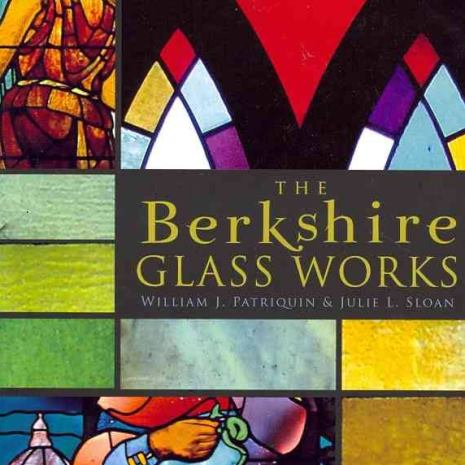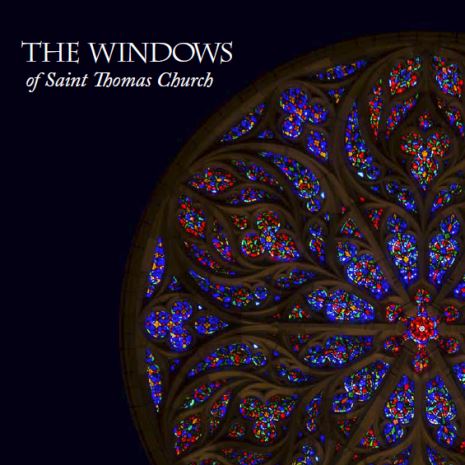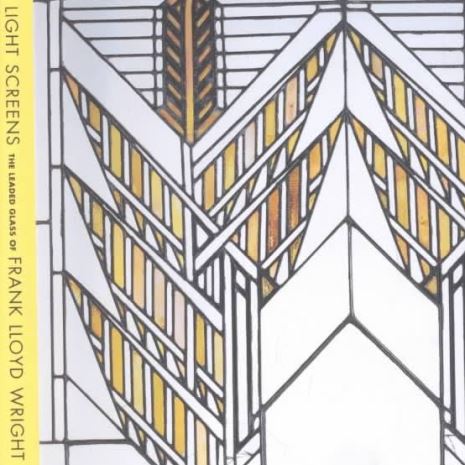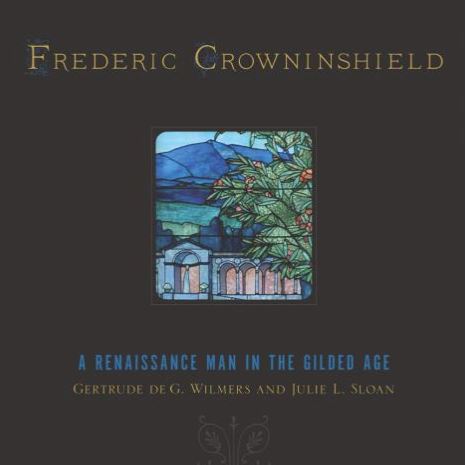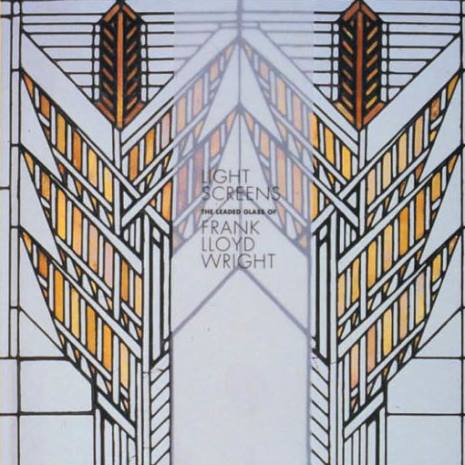The Rivalry Between Louis Comfort Tiffany and John La Farge - Part 4
In 1889, media attention was again spurred by La Farge's award of the French Medal of the Legion of Honor for his exhibition of some twenty stained glass windows. The text of the award called him "the great innovator, the inventor of opaline glass" and credited him with the creation of "an art unknown before, an entirely new industry, and in a country without tradition he will begin one followed by thousands of pupils ... .26 Such accolades must have irritated Tiffany, although he would also be awarded a Medal of the Legion of Honor at the 1900 Paris Exposition. Perhaps in response to La Farge's award, a large article about Tiffany appeared in 1889. It was the first to give Tiffany full and exclusive credit for the first use of opalescent window glass, claiming that "the idea is due to Mr. Tiffany."27 This was a unequivocal challenge of La Farge's award.
In an even greater effort of one-upsmanship, Tiffany managed to have his stained glass exhibited in the Manufactures Building at the World's Columbian Exposition in Chicago in 1893, where there was no organized display of American stained glass, and where La Farge had no representation in stained glass.28 Tiffany's exhibition space was in that sold to his father's jewelry store. He arranged three rooms - a Light Room, a Dark Room, and a Chapel - where many of his windows were dazzlingly displayed and sold.
To accompany the exhibition, Tiffany wrote a long article called "American Art Supreme in Colored Glass," for the Forum.29 The article was ostensibly written, according to the opening paragraph, to draw public attention to American stained glass despite the fact it was not given an exhibition space at the Columbian Exposition. It also served to emphasize that Tiffany's was the only stained glass firm represented there. Tiffany's use of the first person plural voice was a weak attempt to share credit, but although no artist's name, including Tiffany's, is mentioned, all his examples are his own unique products, including glass types - such as drapery and fractured glass, materials manufactured exclusively for his own firm's use - and window glazing techniques that aimed at the elimination of painting and lead lines. The most challenging claim that Tiffany made in this article was not that he had first used opalescent glass in windows, but that it had simply been used before American artists used it, managing to challenge La Farge without appearing to. Significantly, he did not provide examples.
La Farge wrote a privately published response to Tiffany's article called "The American Art of Glass," with a subtitle, "To be read in connection with Mr. Louis C. Tiffany's paper in the July number of the 'Forum,' 1893." While he seemed to respond to Tiffany's attack on his precedence in the field, he did not overtly refute Tiffany's major claims, maintaining a polite, high-minded tone. Starting off with the explanation, similar to Tiffany's, that the Columbian Exposition's omission of American stained glass was the reason for the article, La Farge graciously recognized Tiffany's article as a "generous impulse" to defend all American stained glass artists. But he also pointedly noted that it was only "owing to his connection with the commercial firm that bears his name" (meaning his father's jewelry store) that Tiffany secured exhibition space. No other artist had such an advantage. Further on in the article, La Farge went to great lengths to explain how "commercialism" created mediocrity in imported windows; it was not too far a leap to understand that this extended to Tiffany's work as well.30
After describing the history of the medium in fuller and more accurate terms than Tiffany had, La Farge entered into a point-by-point refutation, correction, or explication of Tiffany's article. Much of this can be called minor quibbling, such as the definitions of cartoons, sketches, and drawings made from life. Its purpose was clearly to demonstrate La Farge's superior knowledge of art. Most important, however, was his disagreement with Tiffany's "recollection" of the early growth of the art of stained glass in America. He recounted his own experiences in some detail, pointing out repeatedly that Tiffany was right there with him in those early days. Of interest is his statement, "The making of such [opalescent] glass seems to have been known for an indefinite period, though I cannot remember, as Mr. Tiffany seems to, that this glass had been used before in window work."31 After spending so many words demonstrating his superior knowledge of the history of stained glass and the minutiae of its technical execution, his sarcasm here is unmistakable. He further implied that he introduced Tiffany to the possibilities of opalescent glass: "I remember a window I had made of English glass, some of the pieces of which I had taken out, to be replaced at will with opalescent; and I remember Mr. Tiffany's pleasure at being shown the enormous change caused by these few insertions." He continued, "All the various firms of makers of glass for artistic use in windows have grown out of these first demands and struggles of the first American artists in glass, the number of whom could be counted twice on a single hand."32 In this oblique indication that there but two artists working on stained glass prior to 1879, he was clearly referring to Tiffany. He mentioned again the "one or two men who began this movement," noting that they "were already trained painters," by which he undoubtedly meant Tiffany, since other stained glass artists, like Daniel Cottier and Donald MacDonald, were not so trained. The implication of demonstrating that Tiffany was present at this time subtly questioned Tiffany's memory of earlier uses of opalescent glass in windows.
The final more-or-less public forum in which La Farge took on Tiffany's claims was in his long letter answering questions posed to him by Samuel Bing in 1894.33 Bing, an art dealer in Paris, visited the United States in that year as an emissary of the French Government to compile a study on American decorative arts. He was entranced by Tiffany, visiting the studio and concentrating on his work to the extent of giving him nineteen paragraphs in his report, while La Farge merited only three. Bing went on to develop a commercial relationship with Tiffany, both as the representative of his art in France and as a dealer to Tiffany of orientalia.34
La Farge and Bing missed one another during Bing's visit to New York - La Farge left for a European trip in the middle of Bing's visit - so Bing left a list of questions to be answered by La Farge. It is not known what Bing did with the letter, but his report seems to have been written before he received it because it contains none of the information provided by La Farge. However, La Farge furnished the letter to Cecelia Waern, an English writer on the decorative arts who visited the United States in 1896. She wrote a monograph called "John La Farge, Artist and Writer," for the English periodical Portfolio, including large quotes from La Farge's reply to Bing.35 This included the most complete version of the story of his discovery of the possibilities of opalescent glass, which occurred while he was recovering from illness after painting the murals of Trinity Church in Boston. Waern's publication of this story was La Farge's last public stab at setting the record straight during his lifetime (his biography by Royal Cortissoz, for which he provided copious notes, could also be considered part of this effort, but it was not published until a year after his death in 1910).
But Tiffany's star was on the rise. In the 1890s and 1900s, his fame would surpass the aging La Farge's. The size of the Tiffany Studios outstripped most competitors and their output of windows, as well as other decorative objects, was enormous. In a shrewd and highly successful marketing ploy, Tiffany began manufacturing smaller objects - desk sets, lamps, boxes, candlesticks - that were within the financial reach of a greater segment of the population. By the time of his death in 1933, twenty-three years after La Farge's, Tiffany's name had become a household word, synonymous with decorative glass of all types but particularly stained glass. La Farge's stained glass, by contrast, was all but unknown. Even today, the word "Tiffany" is applied to stained glass the world over, eclipsing La Farge in the popular mind. The collectibility of Tiffany keeps his name alive in the public perception today, implying by its longevity and high market prices an artistic value greater than La Farge's. But in their day, opinion was not so widely or easily divided, and the two greatest artists of American stained glass were pitted against each other in a very real contest.
Copyright
Copyright © 2000 - 2012 Julie L. Sloan, LLC
This paper is part of a larger study of the development of opalescent glass used in stained glass windows, made possible by the Mid-Career Grant for Preservation Professionals of the James Marston Fitch Foundation and the Samuel H. Kress Foundation, 1995. Their support is gratefully acknowledged.


